
Raw feeding - BARF for dogs and cats - Part I: digestive physiology
MedUP vetpool
Nadine Paßlack, Jürgen Zentek
BARF or raw feeding of dogs and cats is enjoying increasing popularity. This can be explained not least by the fact that many owners want their animals to be fed "naturally", based on the original diet of the dog or cat (BARF = "Bones And Raw Foods"). It is the task of the veterinarian to inform about possible risks and to give adequate hints for a sufficient energy and nutrient supply of the animal.
Part I covers nutritional differences of dogs and cats, basical facts on digestive physiology and influences on digestive processes.
- Keywords
- barf
- nutrition
- raw feeding
- raw food
- digestion
- malnutrition
Introduction
Nutritional differences between dogs and cats
Altogether it is possible to feed a dog or a cat with raw food. However, there is always a certain risk of missupply of energy and nutrients. In addition, raw meat carries an increased risk of infection (parasites, bacteria, viruses), whereby not only the animals but also the people living in the household can be endangered (zoonotic pathogens, e.g. salmonella). An infection with the Aujeszky virus via raw pork meat (also wild boar meat) always ends fatally for cats and dogs and can only be prevented by cooking the meat. In addition to the risk of infection, digestive disorders in dogs and cats are a common problem in raw feeding. These can occur primarily through the use of less high-quality protein suppliers (slaughterhouse waste is rich in connective tissue) or due to a too high protein intake (one-sided meat feeding). In both cases no sufficient protein digestion takes place in the small intestine, so that larger quantities of undigested protein reach the large intestine. There it is metabolized by bacteria, producing gases (danger of flatulence in animals) and harmful degradation products such as ammonia. In addition, the influx of nutrients can lead to shifts in the microbiota (dysbioses) and subsequently to digestive disorders such as diarrhoea.
Dogs and cats differ in their nutrient requirements as well as in their feed intake behaviour and preferred feeds. Against the background of the "original" or "natural" diet, which is not least often referred to in raw feeding, a first difference is interesting: dogs (wolves) have always taken in plant materials (grasses, fruit, etc.), whereas cats have always been strongly attached to animal feed and still are today. Carbohydrates are often not or only moderately accepted by them and are also poorly tolerated in larger quantities (see below). Since cats have a higher protein requirement than dogs, the pronounced carnivorous diet makes biological sense and is reflected in numerous physiological peculiarities. The cat's taurine requirement can also be covered by the strong preference for animal feed, especially meat. As cats only show a low activity of an enzyme which is responsible for the conversion of cysteine to taurine, the self-synthesis is insufficient and taurine has to be ingested via the food. Meat is particularly rich in taurine, whereas no taurine can be found in plant materials.
Another special feature of cats is the strong preference for certain types of food. A conditioning usually takes place in the first months of life. If cats are fed a very one-sided diet during this time, it can happen that the animals develop a fixation on this food and reject other food rations. It is also possible that adult cats, which are fed on one-side with particularly tasty food, are fixed to a certain type of food. Dogs usually do not have such a strict fixation on certain foods, making it easier to change an existing diet.
Another difference between dogs and cats is the frequency of feed intake. While the dog (wolf) originally also caught and ate larger prey (and subsequently could have had longer periods of fasting), the "natural" feed intake of the cat by catching smaller prey is geared towards several (8-20) small meals a day. This behaviour can still be observed today even when cats are kept indoors, as some cats divide their food over the day and only eat small amounts of food (instead of one large meal at a time). However, there are certainly big individual differences here, as some cats also tend to "gobble down" all the food offered. While the dog tolerates more or less long periods of fasting well, a dietary leave is life-threatening for cats, especially if they are overweight (danger of hepatic lipidosis).
In addition to the described aspects, cats also have special features in vitamin metabolism: unlike dogs, they cannot synthesise vitamin A from ß-carotene and niacin not in sufficient quantities from tryptophan.
Finally, it should be mentioned that linoleic acid is essential for both dogs and cats. In dogs, α linolenic acid cannot be produced by the body itself, which is probably also the case with cats. Furthermore, arachidonic acid in cats during reproduction and eicosapentaenoic acid are probably essential at all stages of life, even if only very small amounts have to be ingested through the food.
Brief overview of the digestive physiology of dogs and cats
In dogs and cats, digestion begins in the mouth when the food is crushed and salivated (Fig. 1). However, digestive enzymes are not secreted with the saliva. The food bolus then enters the stomach via the esophagus, where the secretion of gastric acid kills bacteria absorbed with the food on the one hand and initiates protein digestion on the other (activation of pepsinogens to pepsins). Lipase activity in gastric acid is also quite high. The main place of the digestive processes for all nutrients is the small intestine.

Fig. 1: Overview of the digestive processes in dogs and cats.
The red arrows symbolize resorption processes and the blue arrows secretion processes (Fig. modified after: J. Zentek. Feeding dogs correctly. 3rd edition, 2012 Ulmer, Stuttgart).
There, the nutrients are broken down into its constituent parts (sugar, amino acids, fatty acids) and absorbed via the intestinal wall. Minerals, vitamins and water are also absorbed via the intestinal wall. The breakdown of nutrients occurs through the interaction of digestive enzymes from the intestinal fluid, pancreas and intestinal mucosa. In addition, the bile secretion of the liver influences the digestion of proteins and in particular fat. Finally, it should be mentioned that not only nutrients are absorbed in the small intestine, but also an endogenous secretion (protein, minerals, water) takes place. In the large intestine, the digesta is primarily "thickened" by the absorption of water. Of the nutrients not digested in the small intestine, minerals can still be absorbed via the intestinal wall, whereas the other nutrients are available to the colon bacteria for fermentation. While the fermentation of crude fibre in the large intestine is desirable, as it contributes to the stabilisation of the intestinal microbiota, an increased influx of starch or protein can cause problems. If these nutrients are insufficiently absorbed in the small intestine, as is the case with feeds that are difficult to digest or if the overall nutrient uptake is too high, they enter the large intestine and are metabolized there by the bacteria. This produces gases (danger of flatulence in the animals) and harmful degradation products such as ammonia. In addition, the nutrient influx can lead to a one-sided promotion of certain bacteria. The shifts in the composition of the intestinal microbiota (dysbioses) can then cause digestive problems such as diarrhoea in the animals (see below).
In summary, it can be said that adequate digestion requires the balanced interaction of the body's own enzymes and intestinal bacteria (Fig. 2). A lack of enzymes (e.g. pancreatic insufficiency) or shifts in intestinal microbiota can cause digestive problems in dogs or cats.
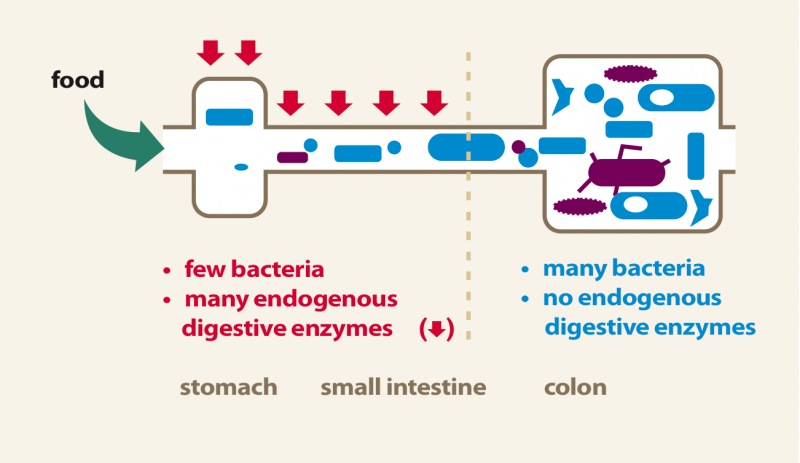
Fig. 2: The interaction of digestive enzymes and bacteria is decisive for undisturbed digestion (Fig. modified after): J. Zentek. Feeding dogs correctly. 3rd edition, 2012 Ulmer, Stuttgart).
Influence on digestive processes
The digestion of dogs and cats can be influenced by various factors: For example, the composition of intestinal microbiota in dogs changes with age (Fig. 3) as more undesirable clostridia and less desirable lactobacilli are found. This is problematic in principle and can cause digestive problems.
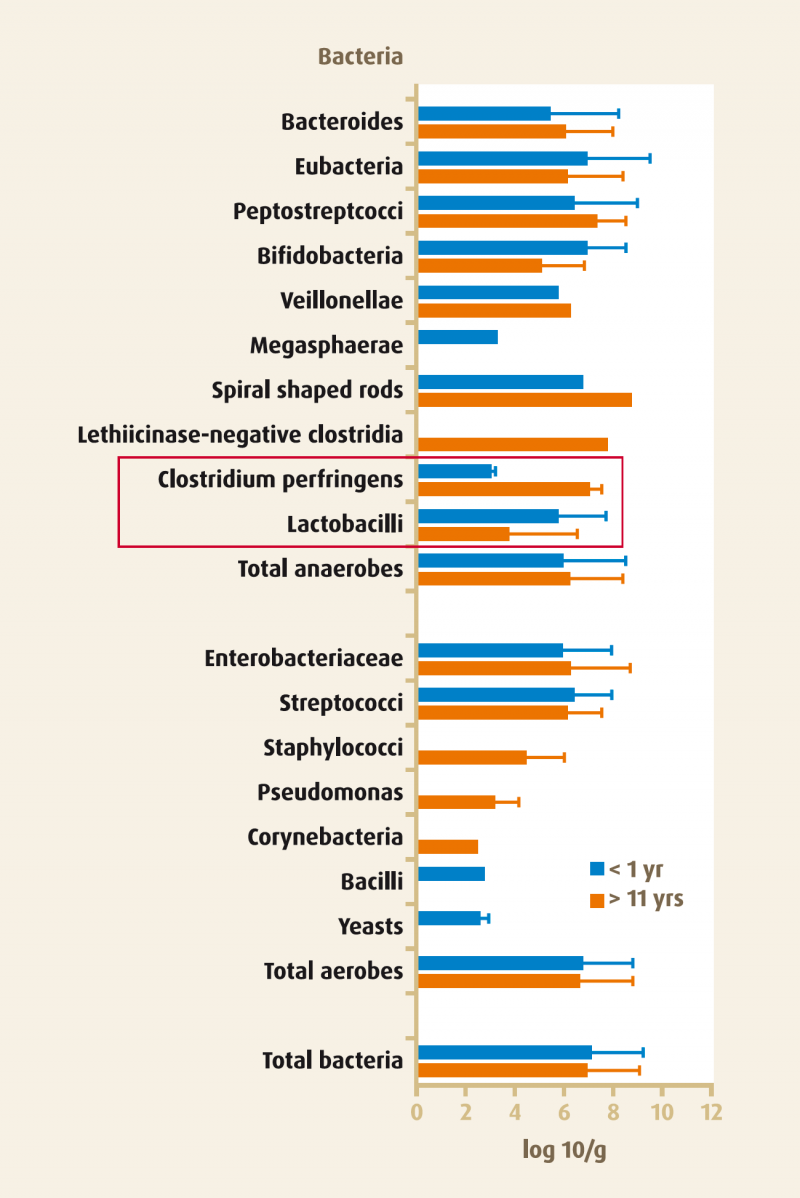
Fig. 3: Changes in intestinal microbiota in old dogs (Benno et al., 1992). The cell counts in the digesta of the ileum in young (< 1 year old) and older dogs (> 11 years old) are shown.
Furthermore, it was observed in cats that the digestive capacity for carbohydrates and fats apparently decreases with age. In addition to the described effects of old age, diseases can also influence digestion. In pancreatic insufficiency, for example, fat digestion is severely impaired because only the pancreas secretes the corresponding digestive enzyme (lipase). In these cases, a fat-reduced diet is recommended to compensate for the restricted enzyme secretion.
The breed of the animal can also influence the digestive processes. Overall, digestive problems appear to be more common in large breed dogs than in small dogs. One possible explanation for this is that large dogs have a relatively shorter digestive tract (per kg body weight) than small breed dogs (Fig. 4). It is against this background that the results of various studies show that the intestinal absorption of fluid and electrolytes is reduced in large breeds compared to smaller dogs. For this reason, large dogs also tolerate wet food less well than small dogs (Fig. 5).
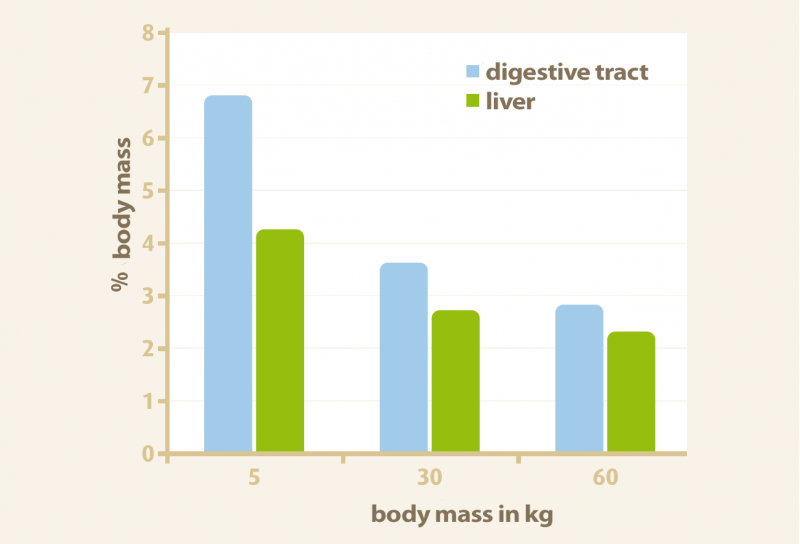
Fig. 4: Relative share (%) of the digestive tract and liver in the body mass (KM) of dogs (Source: Meyer et al., 1993).
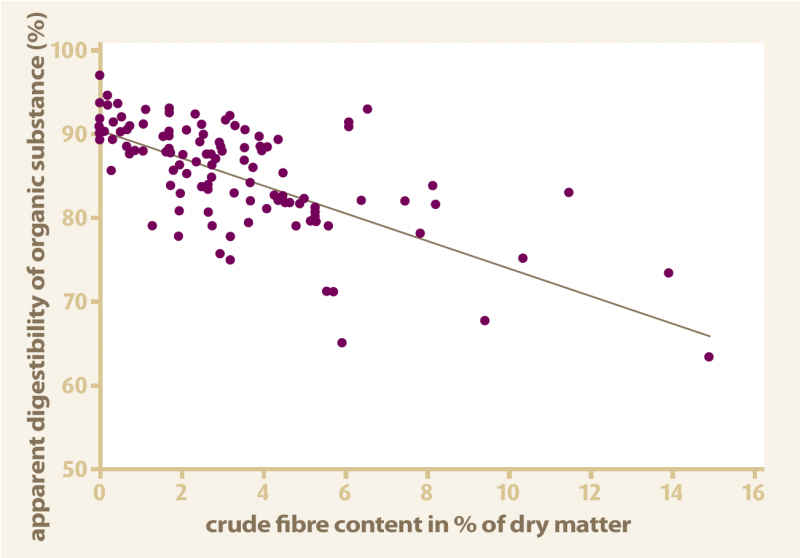
Fig. 5: Influence of dry and wet food on water content in the faeces of small and large breeds (n = 10 breeds) (Meyer et al., 1999). While the faeces was solid in all dogs when feeding dry food, the faecal water content increased significantly in the large breeds when using wet food. The reduced tolerance of wet food in large dogs can be explained by the results of various studies showing that large dogs have a lower ability to intestinal absorption of liquid and electrolytes than small dogs. * IW = Irish Wolfhound
After all, the feed used has a decisive influence on the digestive processes. For example, a high crude fibre content reduces the overall digestibility of the ration (Fig. 6). Furthermore, the quality of the feed used has a particular influence on digestion and will be explained in more detail below.
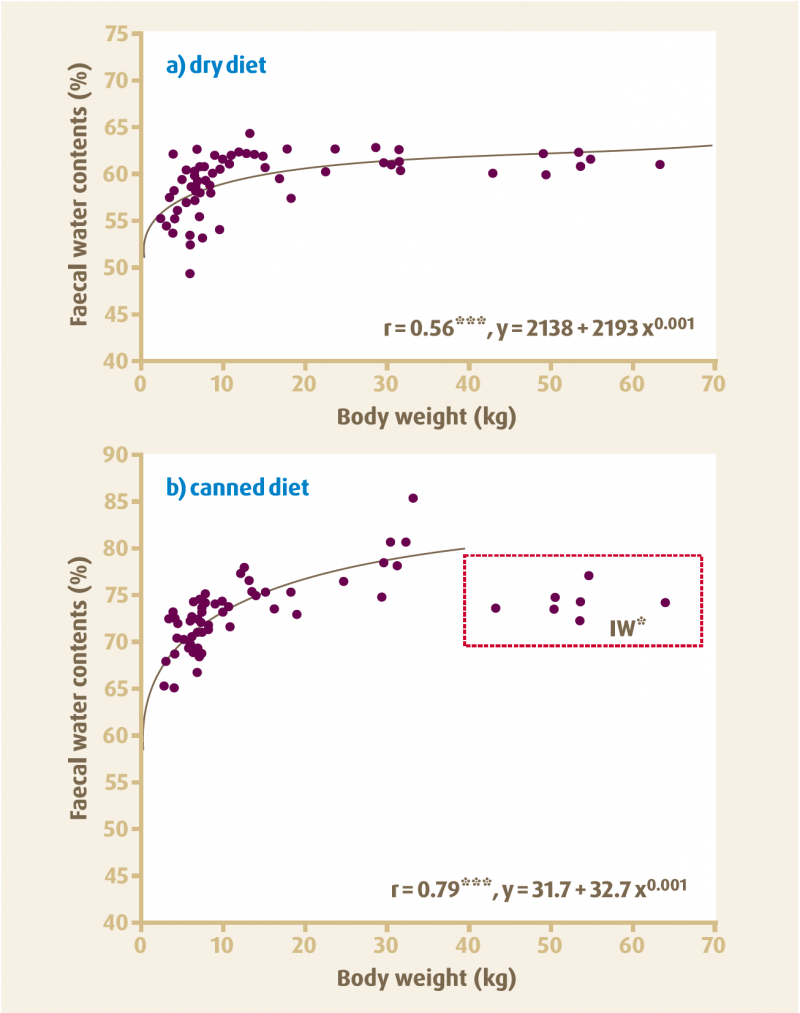
Fig. 6: Influence of the crude fibre content on the apparent digestibility of the ration. The higher the crude fibre content, the lower the digestibility of the organic substance (oS) (Nach Opitz, 1996).
Feed quality and preparation influence nutrient digestibility
The digestibility of carbohydrates in dogs and cats depends mainly on whether and how the starch was broken down before feeding (Table 1). For example, raw rice or raw potatoes cannot be digested, whereas these foods are highly digestible when cooked. The thermal treatment changes the starch structure (gelatinisation) and makes it more vulnerable to the digestive enzymes in the small intestine. This aspect must also be taken into account in raw feeding: While some dog and cat owners use cooked carbohydrate suppliers such as rice, potatoes or noodles and only feed the meat raw, other pet owners, on the other hand, want to do completely without cooked feed. In the last case, it is possible not to use any carbohydrate sources in the ration and to combine only protein suppliers (especially meat) with suitable feed supplements for vitamin and mineral supplements (see below). Oat flakes can also be used as a source of carbohydrates for dogs, since the starch was already broken down during the flake production process. In general, cats do not like to eat oat flakes.
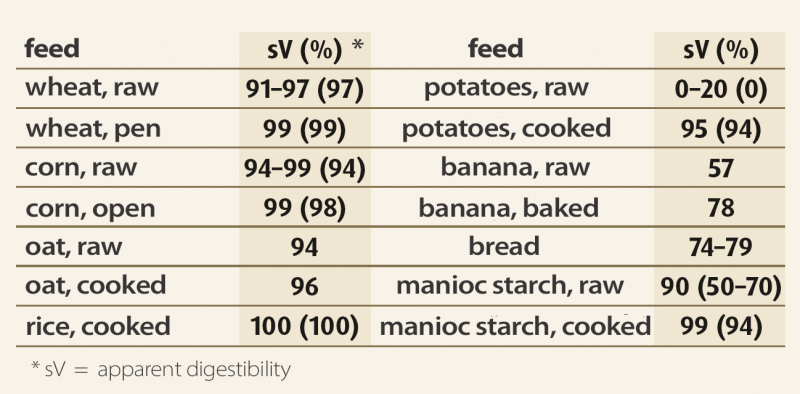
Tab. 1: Apparent digestibility (sV) of different starches in dogs in % (Source: Meyer und Zentek, 2010).
In contrast to starch digestibility, protein digestibility depends far less on the thermal treatment of the feed (Table 2). Eggs are an exception here: Since the egg white contains a trypsin inhibitor, protein digestion is restricted when feeding larger quantities of raw eggs (see below). If, on the other hand, the eggs are boiled, the trypsin inhibitor is inactivated and thus protein digestibility is not impaired.
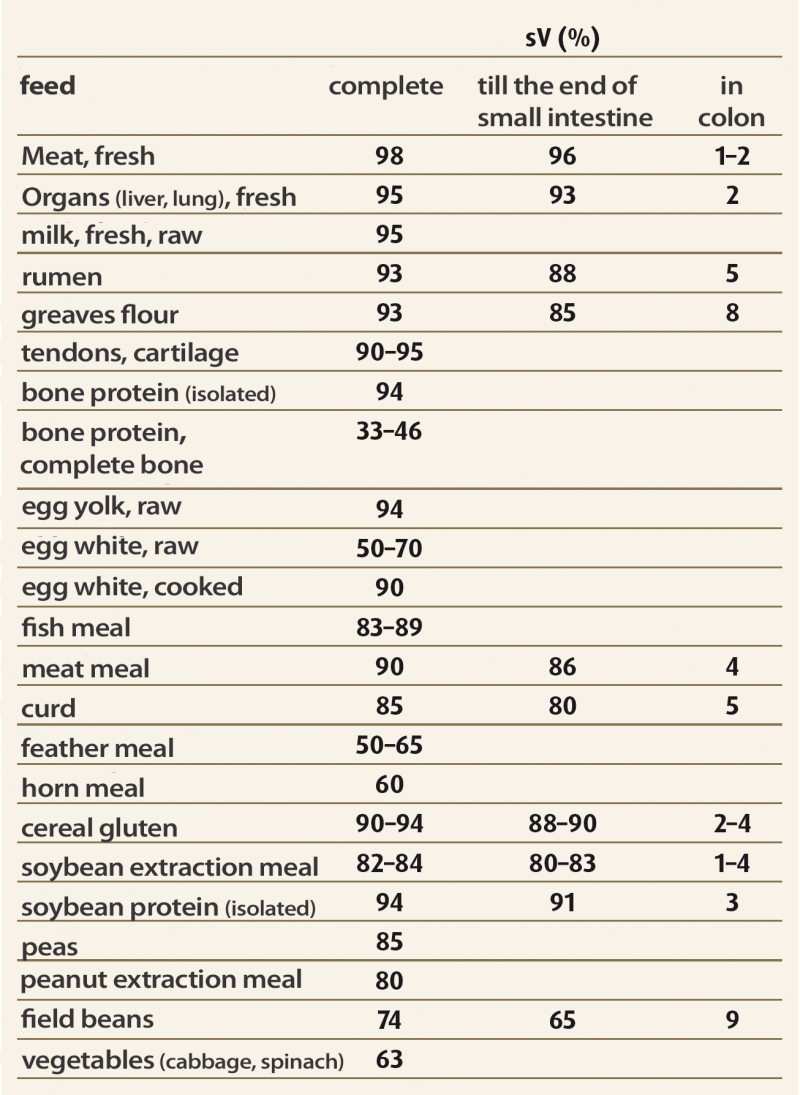
Table 2: Apparent digestibility (sV) of various proteins (%) in dogs (Source: Meyer and Zentek, 2010).
There are considerable differences in quality between the various protein suppliers used in the feeding of dogs and cats:
Materials rich in connective tissue (slaughterhouse waste) are insufficiently digested by the body's own enzymes, resulting in an increased influx of undigested protein into the large intestine (Fig. 7). As a result, dysbioses and thus digestive problems such as diarrhoea or flatulence can occur in the animals.

Fig. 7: If hard to digest protein (slaughterhouse waste rich in connective tissue, tendons, cartilage) is taken up in large quantities by dogs or cats, the digestive enzymes in the small intestine cannot sufficiently break it down. Similarly, excessive protein intake (e.g. one-sided feeding of meat) can overload the enzyme capacity. In both cases there is an increased influx of protein into the large intestine, where it is metabolized by the local bacteria. During protein degradation, the bacteria produce gases (danger of flatulence in animals) and harmful metabolic products such as ammonia. In addition, the protein-using bacteria are promoted one-sidedly by the nutrient inflow. As a result of these dysbioses in the large intestine, the animals can develop digestive problems such as diarrhoea (Fig. modified after): J. Zentek. Feeding dogs correctly. 3rd edition, 2012 Ulmer, Stuttgart).
Fat digestibility in healthy dogs and cats is high and largely independent of the fat source (Table 3). However, the different oils have different fatty acid patterns. The n-3 fatty acids in particular are of dietary interest here (see below).
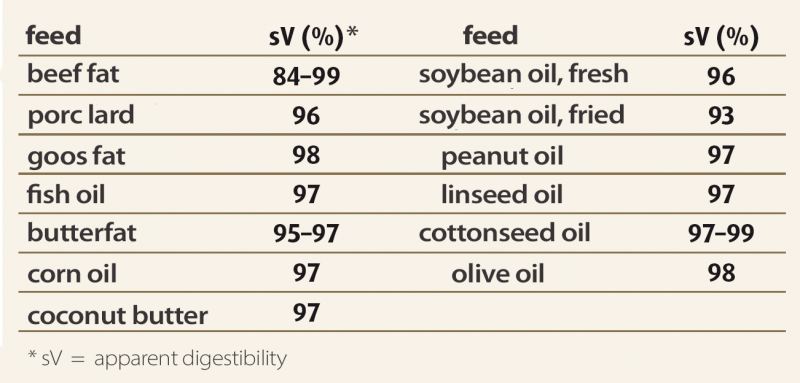
Table 3: Apparent digestibility (sV) of various fats and oils (%) in dogs (Source: Meyer and Zentek, 2010).
Literature
Benno, Y., Nakao, H., Uchida, K., Mitsuoka, T. (1992). Impact of the advances in age on the gastrointestinal microflora of beagle dogs. J Vet Med Sci 54, 703-706.
Köhler, B., Stengel, C., Neiger, R. (2012). Dietary hyperthyroidism in dogs. J Small Anim Pract 53, 182-184.
Meyer, H., Kienzle, E., Zentek, J. (1993). Body size and relative weights of gastrointestinal tract and liver in dogs. J Vet Nutr 2, 31-35.
Meyer, H., Zentek, J., Habernoll, H., Maskel, I. (1999). Digestibility and compatibility of mixed diets and faecal consistency in different breeds of dogs. J Vet Med A 46, 155-165.
Meyer, H., Zentek, J. (2010). Ernährung des Hundes. Grundlagen – Fütterung – Diätetik. Parey Verlag, Stuttgart.
Opitz, B. (1996). Untersuchungen zur Energiebewertung von Futtermitteln für Hund und Katze. Diss Med Vet, München
Zentek, J. (2012). Hunde richtig füttern. Eugen Ulmer GmbH & Co., Stuttgart (Hohenheim).
Teaser photo credits
© Zoran Kolundzija, iStock